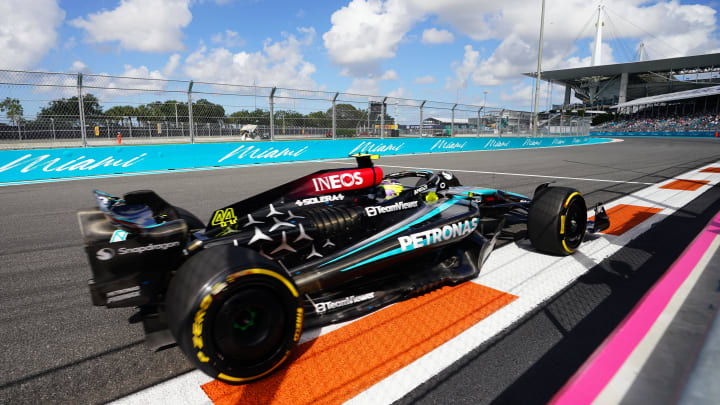Mercedes Director Discusses Complex Rear Tire Temperature Issue

Mercedes trackside engineering director Andrew Shovlin has revealed that the W15 F1 car struggles with a rear tire temperature issue that adversely affects its pace, particularly in warmer conditions. He stressed that this problem requires a comprehensive developmental approach, as a single aerodynamic update won't be sufficient to resolve the underlying issue and restore consistent performance.
The W15 excels on cooler tracks like Silverstone, where Lewis Hamilton claimed his first win of the season. However, in hotter conditions, the car tends to overheat the rear tires. While this characteristic can be advantageous early in a race, helping the tires reach optimal temperature quickly, it becomes a liability on hot days, leading to excessive tire wear and compromising performance over longer stints.
Shovlin disclosed that the temperature-sensitive rear end loses stability under heat, a critical issue that the team is now working on solving. Addressing this problem will necessitate targeted development and extensive testing to identify and resolve the root cause, ensuring the car remains competitive in varying conditions. Speaking to Motorsport, he said:
“I think at tracks like Silverstone, we had a very stable rear end. In Austria and Budapest, we lacked stability.
“That's all down to the fact that we seem to be putting more temperature in the tires than the others.
“We know we need to work on that area. We've got plans to do that, but that's not the sort of problem you can fix with a single aero update. It will be the result of quite a few developments to try and get on top of it.”
When he was asked if it was more of a mechanical problem than aero, he said:
“It's just to do with how you run the car.
“You might need mechanical tools to help you change how you run the car. However, you can achieve the same by affecting the aero characteristics through the speed range, and through the corner.
“We don't understand every aspect of what might be different with our car to theirs, but all we need are development directions that are going to improve it. We'll keep going at that problem until we get to where we want to be.”
While the lack of downforce was one point that came up as the reason for the heating of the rear tires, Shovlin ruled that out by saying:
“If you looked at Silverstone, in terms of how much downforce our car has got, it can't be very different to the McLaren or the Red Bull because otherwise we wouldn't have been able to gently pull away in the first stint.
“So we don't think that is the root cause of the issue.
“If you look at where people are running their cars now, they're all converging on a pretty narrow window in terms of what drag level you target, and inherently what downforce you get from that. So I think we're there or thereabouts in that regard.
“Obviously that's one of the key areas of development that will continue to keep giving. But it is an issue of just rear tire temperature, and that's where a lot of our focus is.”
